How to make a drilling machine from a washing machine motor?
 A broken machine can be given a second life by making a useful household item from its components. So, it’s easy to make a drilling machine from a washing machine engine. The main thing is that the engine is in working order, and the master has the time, desire and necessary consumables. Step-by-step instructions with detailed descriptions and recommendations are below.
A broken machine can be given a second life by making a useful household item from its components. So, it’s easy to make a drilling machine from a washing machine engine. The main thing is that the engine is in working order, and the master has the time, desire and necessary consumables. Step-by-step instructions with detailed descriptions and recommendations are below.
We collect everything you need
A drilling machine is not a cheap pleasure. To make it from scratch, one electric motor is not enough: you will have to additionally find or purchase a lot of materials and tools. So, in addition to the engine and drive belt from the washing machine, the consumables you will need are:
- bearings;
- power cord of sufficient cross-section with a socket;
- round pipe;
- threaded rods;
- drill chuck;
- springs;
- metal profiles for the base;
- nuts and washers;
- thick rectangular pipe (for the rack).
From a working motor from an old washing machine you can make a full-fledged drilling machine.
As for tools, to make a machine with your own hands, you should prepare a grinder, welding, screwdriver, vice and drill. Thread-cutting devices are often required: a tap, a die and a die. A tape measure and a marker will also come in handy. At the “finish” you also need paint for metal surfaces.
Machine base and stand
A homemade drilling machine consists of a washing machine consisting of a base with a stand, a moving carriage, an axis with a chuck and a feed mechanism. First, a basis is assembled on which the remaining elements will be fixed.Instructions on how to do it are as follows:
- draw a circle or rectangle, depending on the chosen base shape;
- cut pieces of pipes for the base;
- we bend the profile pipe, combining the base (to give the shape, the profile is sawed through with a grinder in several places);
- We weld all the elements.
When using welding, remember safety precautions!
The next step is making the stand. Its role is played by a rectangular profile welded to the base strictly vertically. The “leg” is strengthened with a metal triangle or other suitable “corner”. Do not forget that before use, the metal must be thoroughly cleaned of corrosion and dirt, and also checked for defects and irregularities.
Carriage and axle with chuck
The key element of the machine is the carriage, which moves along the stand, tightens and removes backlash. It is made from profiles, a threaded rod and several bearings. The latter act as wheels. The carriage is assembled like this:
- cut the profile into four even sections;
- we retreat 1-2 cm from the ends of each segment and drill holes;
- We tighten the structure with nuts and washers, giving it a rectangular shape.
The resulting carriage is fixed to the rack by tightening the retaining fasteners. As a result, the bearings should be pressed tightly against the profile. This will help avoid backlash.
Next, we cut out the fasteners for the electric motor from the steel plate. It is important that the holes on the elements are oval. This makes it easier to move the engine and, accordingly, tension the drive belt. Then we proceed to setting up the driven axis with the drill chuck:
- we make a base for the axle by pressing bearings into a section of tube;
- insert the threaded rod into the cut and fix it by tightening a pair of nuts on both sides;
- We weld the profile with the rod using washers and grind the weld seams with a grinder;
- We weld the resulting bushing to the carriage (necessarily at an angle of 90 degrees);
- fix the pulley on the axis;
- install the drill chuck on the axis.
After installing all the elements, we check the quality and reliability of the fastenings. We place the corner on different sides of the structure and make sure that the drill is positioned strictly perpendicular to the base. Otherwise, it will be difficult to work on the machine.
Bicycle sprocket knot
A block with bicycle sprockets can be used as a feeder unit. It is necessary to make a proportionate axis so that the “gears” rotate freely on it. Afterwards, the rod is welded to the plate, which is attached to the carriage. A handle made of profiles is attached separately to the “star”.
Metal parts used to manufacture the machine must be straightened and cleaned!
The next step is to make a clamp from a profile and a rod, which is securely fixed to the base of the machine. Now you can tighten the bicycle chain. Here it is recommended to “work” with the pulley to select the most suitable sprocket. It is important that the drive is tensioned, does not fly off, and rotation occurs simply and comfortably. At the “finish” we paint the product.
Machine capabilities
A homemade machine with a drive and electric motor from a washing machine is a powerful and easy-to-use device. Due to the belt drive, the engine speed is reduced and the speed is increased. As a result, the tool quickly and easily drills even thick steel with drills of any diameter.
Having assembled and painted your homemade product, you can begin testing it.The equipment starts up as follows:
- we remember safety precautions (that the drilling machine is extremely dangerous, so we securely fix it on the work surface and use personal protective equipment);
- connect the machine to the electrical network;
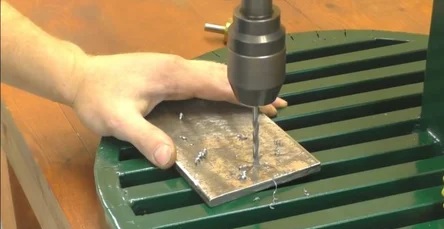
- install a drill of the required section;
- place a sheet of metal under the drill that needs to be drilled;
- drill the required number of holes.
The result will please the master: the torque will be enough to drill even thick steel. Moreover, there are no restrictions on the drills used - even large-diameter “heads” can be installed in the chuck. If the speed gained by the electric motor is small, it is easy to improve the design: fix another smaller pulley on the driven axle. The machine will speed up and “take” metal of any thickness.
Interesting:
Reader comments
- Share your opinion - leave a comment
Categories
Washing machine repair


For buyers

For users

Dishwasher

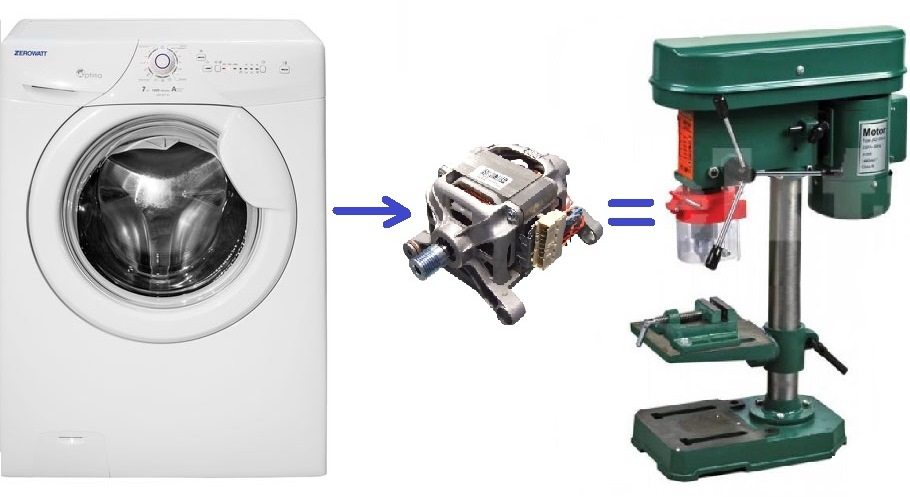
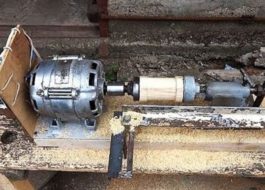
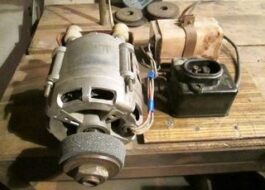

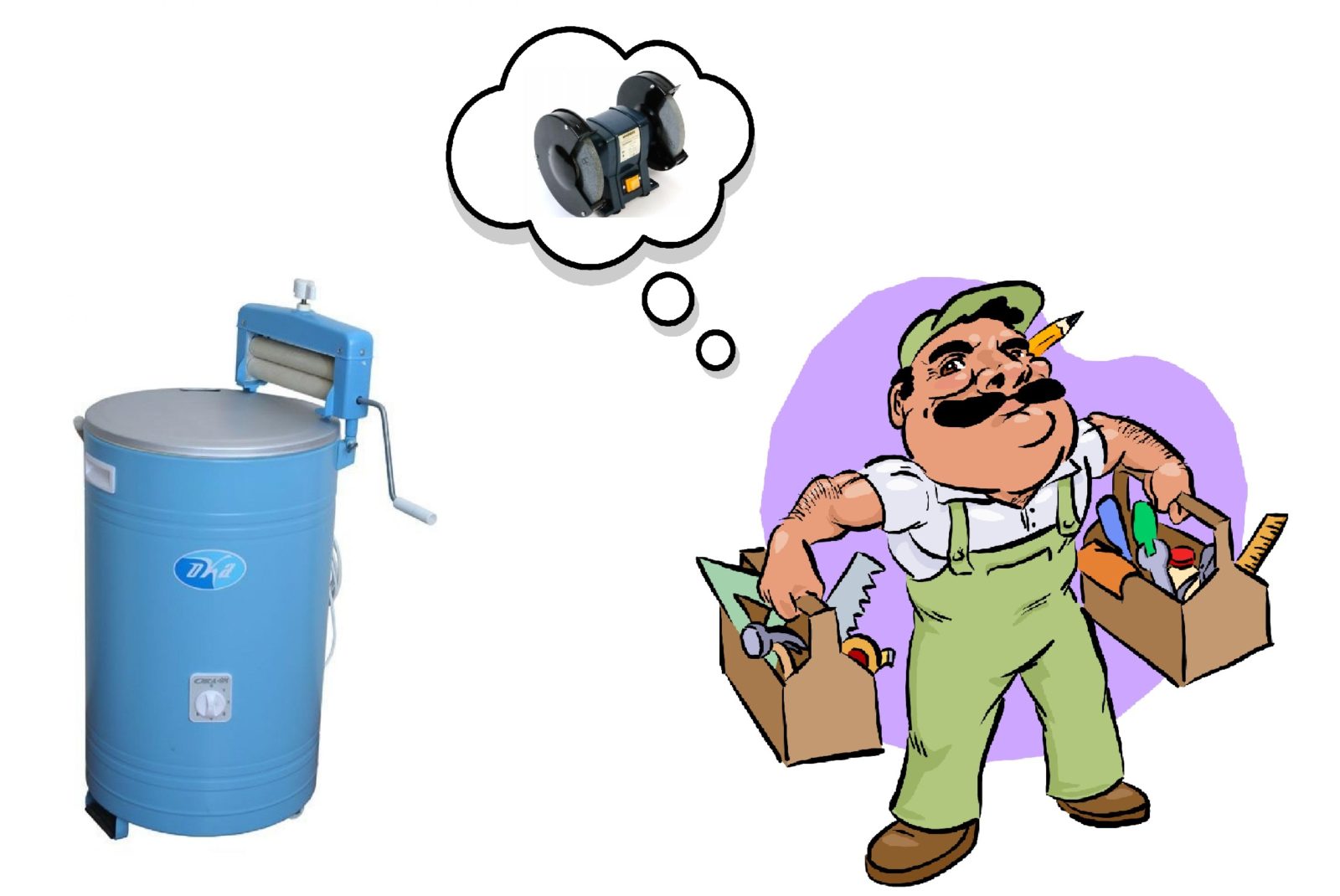
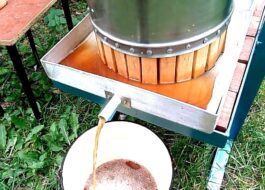










Add a comment